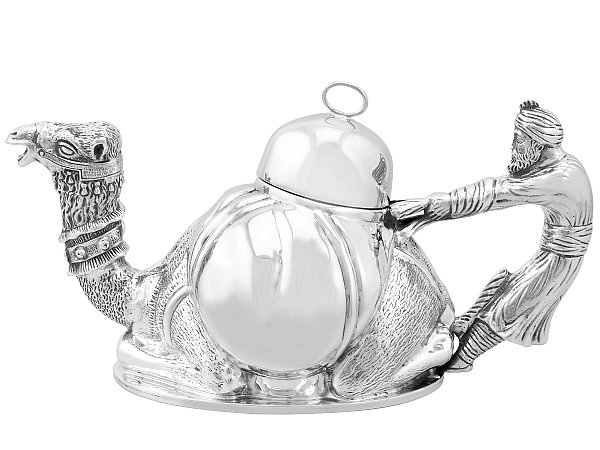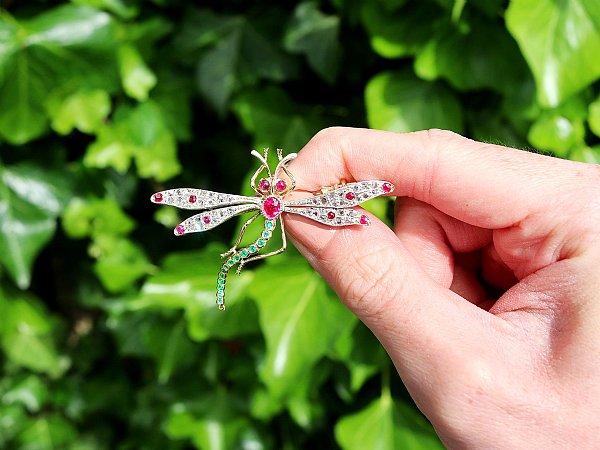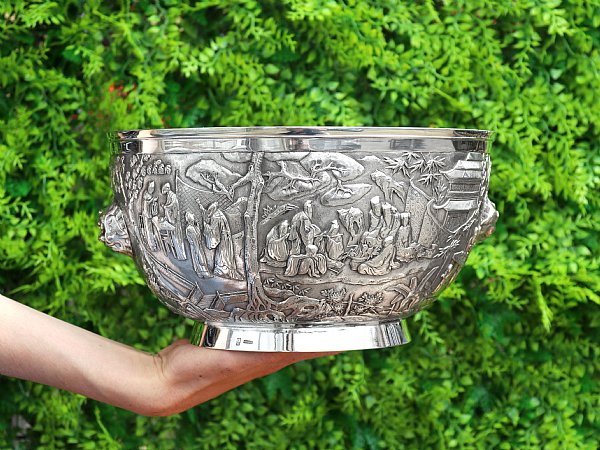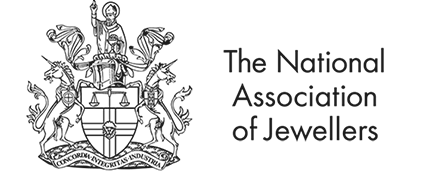Search Results for: '{{searchText}}'
Sorry...
We don't seem to have what you're looking for.
However we do have thousands of magnificent pieces of silver and jewellery available for you to view online. Browse our store using one of these categories.
Please wait for loading data... 
AC Silver have an extensive range of impressive antique and vintage silver coffee and teapots available for sale, with styles ranging from the heavily ornamented Louis style, to the angular Art Deco, in addition to the highly classic and popular fluted Queen Anne design.
Andrew Campbell hand picks all of our vintage and antique silver teapots and coffee pots, and does so on merit having been retailing antique silverware since 1977.
Please browse our extensive silver teapot and coffee pot collection above, all including FREE and INSURED international shipping.

The first ever recorded silver teapot was made in England around 1670 as a gift for the East India Company from George, Lord Berkley.
This particular teapot was very typical of the period and was similar in shape to a coffee or chocolate pot. The teapot, however tended to be very small due to the high cost of tea. There were two other silver teapots made around the same time (1670 and 1685) which were both more melon shaped; their compressed form made them no more than 6 inches high. They were most likely modelled on the Chinese earthenware pot which was increasing in popularity across Europe at the time.
In the early 1700s it was popular for the ends of the spout to be modelled in the form of a bird’s head. The lid would have been hinged, with the handle crafted out of polished wood, ebony or leather coated plain wood.
It was also around this time that drinking tea with milk became popular, creating the demand for silver tea services including milk/cream jugs and matching sugar bowls. Between 1690 and 1750 George Booth, the Earl of Warrington, collected many silver teapot and silver tea sets with various accessories including strainer spoons, sugar tongs and "boats to hold the teaspoons."
Between 1725 and 1750, a popular teapot shape was bullet teapots. The French Rococo style also had a big influence on design - this meant elaborately decorative flowers, scrolls and spouts shaped like swirling dragons. As the century progressed, some examples were even crafted in octagonal, panelled shapes. By 1776 the ‘Sheraton’ style prevailed, succeeded by the ‘Hepplewhite’ style in 1789. Both of these designs featured a straight spout.
During the eighteenth century the middle class in England was becoming more affluent and therefore demand increased for affordable luxury items; this was in order to display their increasing wealth. Fortunately, costs were decreasing due to the introduction of new production methods and the use of specialised craftsmen. Silver items such as teapots therefore, could be crafted more economically for a rapidly expanding customer base.
Teapots made in the late eighteenth century ranged in style from simple oval shapes with minimal engraving to elaborate serpentine forms with extensive ornamentation. It is possible that the new developments in manufacturing allowed the silversmiths more time to focus on the intricate embellishments and detailing, rather than the time-consuming hammering they had to endure previously.
The processes of brewing and serving coffee have changed somewhat over the years. The earliest form of the drink was made in an old brewing pan of hot water, using a cloth to then filter the brewed water through. In 1710 furthermore, the brewing process of coffee was taken one step further: the coffee was wrapped in a linen cloth and this was then placed in the pan of boiling water to help get a stronger brew. As popularity and demand for coffee grew in the 1700s, so did the need for specialised vessels such as coffee pots.
These pots were specially designed for the brewing of coffee, featuring an attached lid to help the infusion process. The bottom of the pot would be made wider than the top in order to help catch the sinking coffee grounds; spouts on the side were added for the same purpose. Another reason for the sudden necessity of coffee pots was so that coffee could be consumed within the house. As a result of the fact that women were excluded from the 3,000 or more nationwide coffee houses, a design specific to the home became necessary; coffee could now be enjoyed as a part of family life.
Silver coffee pots were first used by Pascal at St. Germain''s fair in Paris, 1672. From this point onwards, English and American silversmiths began to create the most amazing forms of silver coffee pots. At the beginning of the 18th Century the consumption of coffee (as well as other beverages including tea and chocolate) escalated in popularity, resulting in the mass manufacture of coffee pots. Coffee pots were largely akin to chocolate pots, the only distinction being that the finial of chocolate pots could be removed so that a rod could be inserted to stir the chocolate. Because of this surge of popularity, the 1700s saw the dawn of beautiful coffee pots, particularly those with tapering panelled forms. There are some magnificent examples from this period: from plain cylindrical forms to pear shaped deeply fluted bodies and elegant flat chased ornamentation.
Soon after this, coffee pots began to be crafted in a tapered cylinder shape with a high domed cover. The spout was placed low on the body, along with the classic right-angled handle. Octagonal designs were introduced circa 1710. This style encompassed a flatter wider base, along with a top in the tear-shaped drop form.
The spouts on pots weren’t placed on the opposite side of the handle till the 1720s. The incurved base of the coffee pot became standard in the 1730s along with the plain tapered form.
The pear-shaped coffee pot came into fashion around the 1740s and prevailed until the 1760s. These jugs tended to sport shorter spouts than the previous type. This design is likely to have been originally intended for Turkish coffee which was of a much thicker consistency.
Sterling silver is the perfect material for crafting teapots, as the natural properties of silver cause heat to be retained. Thus, tea brewed in a silver teapot will stay warm for much longer than if made from other materials.
A second beneficial property of silver is the metal has high thermal conductivity; therefore, tea leaves are brewed at a higher temperature than with any other teapot. The higher the temperature, the more the tea leaves release their flavours within the brew. Of course, due to these high temperatures and silver''s conductivity, the handles would be crafted from a different material such as wood so the pot could still be picked up. Alternatively, insulators/resistors (often made from ivory) would be added to the top and bottle of the handle to stop it conducting too much heat.
Another positive is that silver is very durable- unlike porcelain and ceramic- and when dropped or in a collision with another object it will not shatter or break. It may dent a little, but generally silver teapots are much sturdier and more long-lasting than other pots.




